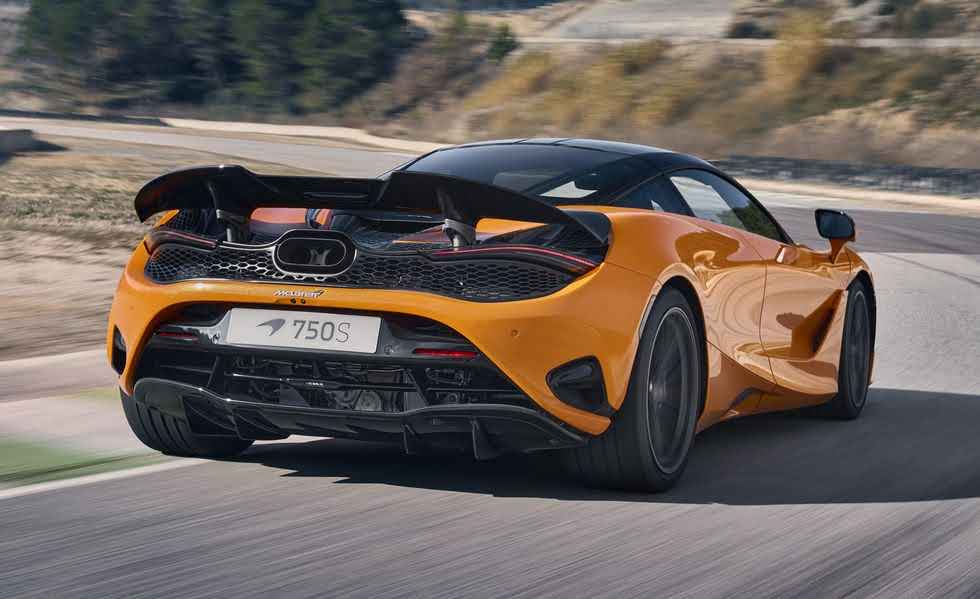My personal opinion is that a car isn’t good if it isn’t good on the road.

Indeed, there are plenty of excellent cars built for track dominance.A book might be filled with the list of lust-worthy Ferraris made expressly to turn a track lap into an endorphin hit as addictive as heroin. Dodge Demons tear up drag strips, Taycan Turbo GTs tear up road courses. To be more technical, almost all cars nowadays have top speeds and lateral grip that are difficult to approach (legally, at least) on a public road.
Ultimately, however, automobiles are designed to be driven from point A to point B, not from point A to point B and back again. Most of the time, even track-ready specialties will be mostly driven on public roads. A car’s ability to operate on the street determines whether or not it is street-legal. A vehicle that makes a great driver should be able to convey who it really is and satisfy the driver both on and off the road.
Let’s just say that the 2024 McLaren 750S is one amazing vehicle.
Yes, I can also vouch for how well it performs on a closed course; the thoughtful folks at McLaren made sure to offer us a crack at the private track tucked inside Las Vegas Motor Speedway’s oval to give a sense of the car’s limits. But it was during a few hours driving the 750S up and down one of my favorite stretches of pavement on the planet — Nevada State Route 167 — that I learned just how delightful and engrossing this latest member of the Macca family is.
167, for the record, is a serpentine 53-mile stretch of billiard-table-smooth highway that runs through the Lake Mead Recreation Area from the outskirts of Vegas to the Valley of Fire State Park. Along it, you’ll find no gas stations, no towns and — on account of the national park fee needed for entry — almost no through traffic. What you will find: a delicious smorgasbord of tight turns, long sweepers and straightaways long enough to land an SR-71, all blessed with excellent sightlines and backdrops straight out of a Calvin and Hobbes Spaceman Spiff adventure.
Overview
Bummed understates how we felt when McLaren ended production of the 710-hp 720S at the end of 2022. Alas, if not to win our hearts all over again it’s mostly back, reincarnated as a lighter and restyled 740-hp version called 750S. It is offered in both coupe and spider body styles, and burning premium behind the seats is a familiar twin-turbo 4.0-liter V-8 and seven-speed dual-clutch transmission. McLaren essentially put the 720S through mechanical engineering weight-loss surgery to build an even quicker car. The center-exit exhaust is lighter, the lightweight wheels reduce rotational mass, and even the pistons, borrowed from the 755-hp 765LT, encourage quicker reaction time when you put your foot down. While the mid-engine 750S might not be an all-new internet-breaking McLaren, we like to think of it as an already impressive supercar ready for spring break after doing five-minute ab workouts all winter.
Pricing and Which One to Buy
The price of the 2024 McLaren 750S starts at $308,195 and goes up to $324,195 depending on the trim and options.
0$100k$200k$300k$400k$500k
It’s simply impossible to spec the 750S incorrectly. We should point out that if 750S buyers pay enough for each carbon fiber and lightweight option, the coupe does end up a manufacturer-claimed 108 pounds lighter than the spider. Though, we’d like to think being seen in the 750S outweighs all else.
Engine, Transmission, and Performance
Aft of the 750S’s cabin lives a 740hp twin-turbo V-8 engine that’s not shy about applying its 590 pound-feet of torque to the rear wheels. A seven-speed dual-clutch handles gear shifts. After sampling the 750S coupe for ourselves, which included some breathtaking track time at Circuito do Estoril in Portugal, we estimate it can hit 60 mph in as little as 2.5 seconds. We’re looking forward to confirming that with our own testing, but that would make it slightly quicker than the discontinued 720S we previously tested. Beyond its raw power, the 750S dons a set of lightweight wheels, the lightest ever fitted standard according to McLaren, and aggressive aero bits that give it more downforce than the 720S. McLaren’s latest iteration of their hydraulic suspension has lightweight springs and dampers that promise to give the driver more feedback when it comes to carving canyon roads. Borrowing sensibilities from the million-dollar Senna, the 750S slows down with an available ceramic rotor-and-monoblock caliper track brake package. When it comes to navigating life’s speed bumps and bumper-scraping parking lot entrances, the 750S will quickly raise its nose with the click of a button. Pirelli P Zero summer tires are standard equipment, and P Zero Corsa and track-focused P Zero Trofeo R rubber are optional. The 750S fitment is staggered, with 19-inch wheels up front and 20-inch wheels for the rear.
Leave a Reply